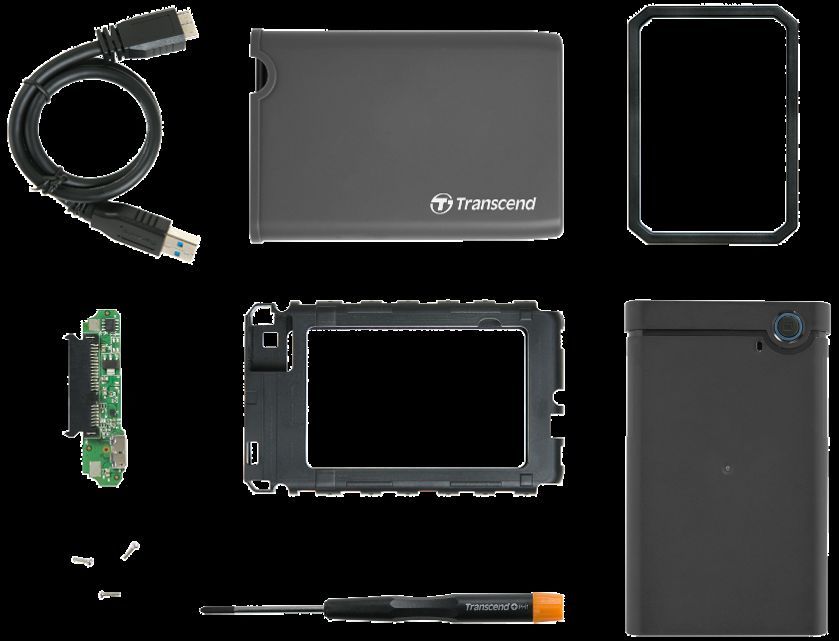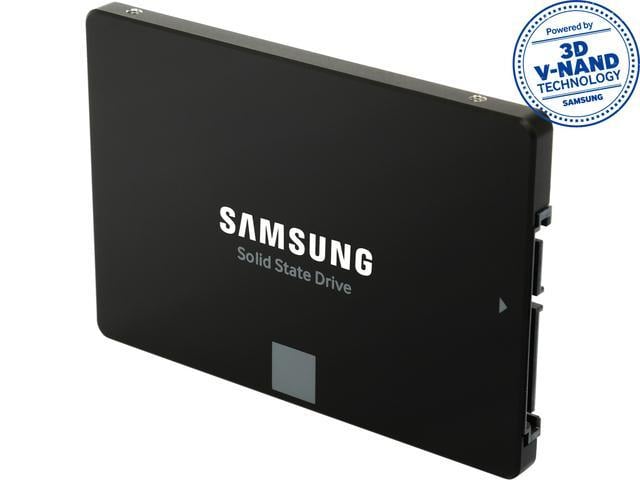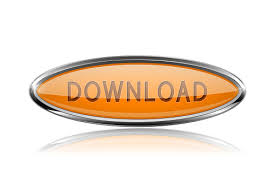Download Samsung 830 Series SSD Firmware CXM03B1Q for Mac OS (HDD / SSD / NAS / USB Flash). Most SSD manufacturers also require additional software that will help.
/PowerMyMac /Guide on How to Clone Mac Hard Drive to SSD
When it comes to the cloning topic, what do you expect from the process? If you are planning to clone Mac hard drive to SSD, let us take a close look at what is the cloning process all about. Generally, it is recommended to clone the hard drive of your Mac in case you decide to upgrade the hard drive with a solid state drive (SSD), replace an old or corrupted drive with a new one or if you are going to create a bootable hard drive.
- List of all WD firmware and software available for download.
- Download Tools, software, and documents for Samsung Portable SSDs. Brochure, Warranty, and User Manual for Samsung Portable SSD (external storage) T5 and T3.
- Samsung Magician software is designed to help you manage your Samsung SSD with a simple, intuitive user interface. Download files & find supported models.
In most cases, all these demands can be achieved with the help of cloning. Essentially, when you clone the hard drive, you will no longer worry about reinstalling the operating system as well as transfer folders, files, applications and some configurations on the new hard disk. Another advantage with the cloning process is that if you have a duplicate hard drive with setup volume, it can aid in booting your Mac easily in case of unexpected disasters.
Article GuideWhat are solid state drives (SSDs)?How to clone Mac hard drive to SSDShould I backup or clone?Let's wrap it up
Samsung Portable Ssd Software Download
What are solid state drives (SSDs)?
Before you decide to clone Mac hard drive to SSD, let us take a close look at SSDs. Solid state drives or SSDs utilize flash memory to keep data. If built into a computer, they are usually seen as chips on the circuit board. You can also find them in 2.5” format that you can install in a laptop or an external enclosure.
Generally, SSDs are quiet, compact and fast, especially if you are starting up a computer or waking up the device. Remember that hard disks might go into sleep mode when not used for a certain span of time and takes a few seconds to spin up. SSDs also utilize less power, run cooler, lighter and do not have any movable parts which make them suitable for laptops.
When you accidentally drop your laptop when the hard drive is spinning, there is a likelihood for the drive to be damaged and lose data. SSDs are generally more dependable, and in case they fail, you can still read data whereas you cannot do this with a hard disk.
Nevertheless, SSDs are considered as a costly option if you are considering the cost to storage ratio. At present, you can purchase an 8TB external drive for less than $150 while that same amount of money will only provide you with a 500GB SSD.
People Also Read:How to Partition A Hard Drive on Mac?How to upgrade your MacBook Pro with an SSD?
How to clone Mac hard drive to SSD
There are several reasons why it is best to boot from an external hard drive. In case you prefer to keep your files synchronized from a desktop and laptop, enlarge your storage or have an on-hand bootable backup duplicate of your system, there is an unseen feature in Disk Utility that makes the process an easy task.

Essentially, booting from an external hard drive is usually slower, even if you are using the latest Thunderbolt or the USB-C drives. They are relatively sluggish than the solid state drives (SSDs) that are found in most of the latest Macs. Although this is not suggested for daily use, it is a possible option.
Using Disk Utility
If you are going to clone Mac hard drive to SSD, it is recommended to use Disk Utility.Simply open Disk Utility from the Spotlight (Command+Space) or on the Utility folder in your applications. You will be presented with a list of all the volumes including the internal hard drive and the external hard drive.
It is important to note that the “Restore” option in Disk Utility will work by copying the files from the backup to your core drive. It is ideally intended to the utilized for Recovery mode to reinstate the hard drive in case a failure occurs.
Once you decide to set your external drive as the restore target, you can switch that action around and copy files from the main drive to the backup. Choose your external drive in the sidebar, tap on the “Restore” button in the menu and select your main drive as the “Restore From” option. You have the option to choose an ISO image, but it does not have much use.
Tap on the “Restore” button and Disk Utility will initiate the copying process. In most cases, the process is relatively a long one which is based on the speediness of your external drive as well as its link to your Mac. Due to this, it is recommended to have a rapid hard drive with USB-C, Thunderbolt or USB 3.0 connections.
Once Disk Utility completes the task, you can turn off your Mac and press on the Option when it starts to restart again. You will be presented with the boot switcher and you are allowed to boot from the external hard drive. You can utilize your Mac as usual but remember that it is separate from the installation on the main internal hard drive. Take note that any settings that you alter or files that are saved there will not be reflected on the primary installation.
You can perform the same process in a reverse manner if there is a need to copy the files back over or to restore the backup in case your computer malfunctions.
Should I backup or clone?
Generally, hard disks can be backed up or cloned. Remember that there are differences between the two with their own advantages and drawbacks.
Backing up a hard drive
If you are going to back up a hard drive, the entire content of the chosen drive or partition is backed up into a file on the targeted location. All data is saved into a single file. When a complete backup of the hard drive is carried out, the whole operating system along with the installed applications and settings are also set aside. The file can be protected or encrypted with a password.
The advantage of this approach is no other than simple management since a single file contains the whole backup. You can also compress the backup file so that it utilizes less space.
As for a drawback, you need a backup software to be able to reinstate the system or data to a previous state or to access documents and files.
Cloning the hard drive
If you are going to duplicate or clone Mac hard drive to SSD, a copy of the drive is created directly on the target location. This simply means that you have an instant copy including the hard disk structure. A cloned disk or drive includes all the partitions from the source drive or disk.
An advantage with cloning is that the data is directly copied to the specified location and can be utilized and edited directly. The duplicated system drive which includes the operating system can be mounted as a fresh drive and booted right away.
As for the drawbacks, a clone requires more space since the partitions are created immediately on the targeted disk. Due to this, it is not likely to compress or add encryption to the data.
Let's wrap it up
Samsung Ssd Transfer App
If there is a need for a backup to be created regularly, it is recommended to opt for the hard drive backup. This usually takes up less space and allows the creation of extra backups.
In case you require a bootable extra drive to be operational after an unforeseen crash and to lessen the downtime period, it is best to clone Mac hard drive to SSD.

Generally, both methods have been proven to be the ideal choice. A consistent drive backup for daily data along with a clone of the system drive is essential for easy accessibility in case of emergencies.
ExcellentThanks for your rating.
Rating: 4.6 / 5 (based on 85 ratings)
People Also Read:
PowerMyMac
A powerful all-in-one App for Mac
Free DownloadClean up and speed up your Mac with ease
Free DownloadYou can't access a Sandisk, Crucial, or Samsung T3 when the external SSD is not recognized or detected by Mac, whether the external SSD was working for a long time or it's a new SSD you bought recently.
However, hard drives not working or showing up issue is so prone to happen even when you unplug the external SSD from the Mac and later on plug in the SSD again. It's definitely frustrating, especially when you have important files stored on it.
How can you fix the unrecognized external SSD and access your files stored on it? You will find the answer and troubleshoot this problem in this post.

Why is external SSD not recognized on Mac?
Various reasons are leading to external SSD not showing up issue on Mac. Here we conclude four main causes as below:
1. The SATA to USB 3.0 adapter/Dock is malfunctioned.
Usually, you need to buy an additional dock, disk case, or SATA adapter to access an SSD drive. During this process, if the externally connected SSD is not recognized by your Mac, it's likely that the adapter is not compatible with the disk's SATA interface, or the dock/drive caddy is faulty.
2. The external SSD is new and uninitialized.
This happens when users externally connect the SSD to backup or transfer files on the internal hard drive. But many newly bought SSDs are not initialized with a file system, which means there is no entrance for macOS to recognize and communicate with this SSD, and for sure, the external SSD won't show up.
3. The external SSD has a file system that can't be recognized by Mac.
Possibly, the SSD that you try to access is formatted with a file system. However, it's not a file system that your Mac can recognize. For example, it is formatted with a Linux file system. In this case, your macOS can't recognize the external SSD surely.
4. New software or firmware needs to be updated.
This happens frequently for Samsung portable SSD T5/T3, because you need to install Samsung portable SSD Software to unlock disk's password and update certain firmware for this SSD. And if the necessary software and extension are not downloaded, you may receive 'No Samsung portable SSD is connected' from its software.
5. The external SSD is not set to show up on Mac.
Sometimes, your external SSD actually is recognized by the Mac, but some setups stop the SSD from showing up in the Finder, on the desktop, or even in the Disk Utility.
6. The external SSD is corrupted.
Another possible cause is that you have unsafely ejected your SSD, which makes the external drive corrupted after some core data like partition table or file system is damaged. Also, you need to be clear that the life span of an SSD is limited depending on how frequently you use it.
7. Other Hardware problems.
How to fix external SSD not recognized on Mac?
Solution 1: Check whether the external SSD is properly plugged in
Since all SSDs use SATA interface, so when an external SSD is not recognized by Mac, the first and foremost solution is to check whether the external SSD is properly plugged in. So simply do these checks:
- Check if the cable is working by connecting the external SSD with a different cable.
- Check whether your SSD is using SATA Ⅰ, Ⅱ, or Ⅲ so that your adapter/dock/case is compatible with your external SSD.
- Try a different SATA to USB adapter and make sure it works by plugging in a different drive.
- Try to connect the external SSD directly to your Mac if it's a type C drive, rather than accessing it via a USB-C adapter.
If the unrecognized external SSD is a Samsung T5/T3 SSD, and you got the 'System Extension Blocked' and 'No Samsung Portable SSD is connected' messages when executing Samsung Portable SSD Software, simply go to System Preferences > Security & Privacy > choose Allow button next to the message: System software from developer 'Samsung Electronics' was blocked from loading.
Solution 2: Reboot your Mac computer
Sometimes, Mac externalSSD not mounting issue is caused by the system issues. But you easily fix them by restarting. The restarting process will refresh your macOS's memory and starts it up fresh, which works efficiently especially when the USB port is busy. Simply choose the Apple menu and click Restart.
If you are interested in, you can learn what happened inside when Mac doesn't recognize an external drive with details.
Solution 3: Find the unrecognized external SSD in Disk Utility
When an external SSD is not showing up on Mac, the most necessary step is to check whether the external SSD can be found in Disk Utility. If the external SSD can be found in Disk Utility, you make sure that the drive doesn't have any hardware problems. But if you can't find it listed in Disk Utility, the external SSD might be physically damaged.
So simply Go > Disk Utility > View > Show All Devices to check the external SSD.
- If your external SSD is using Windows NTFS format, macOS won't mount the drive in writable mode. To write to an NTFS drive, you need to download a free NTFS for Mac driver.
- If you have used this external SSD on other computers for some time and now it is unrecognized by macOS, the file system of the SSD is either unsupportable or corrupted, you need to recover lost data from this external SSD and reformat the drive.
- If you newly bought this SSD and it is not initialized, you can't see the partitions of the external SSD in Disk Utility but receive an error message 'the disk you inserted was not readable by this computer'. In this case, you need to make sure you don't have any data on this drive and then initialize it in Disk Utility by erasing.
Solution 4: Repair the unrecognized external SSD with First Aid
If your external SSD shows up in Disk Utility but not mounted, you can right-click the drive and select Mount menu and then the SSD will show up on Mac. If the Mount button is grayed out or you fail to mount the external SSD, try running First Aid to verify and repair disk errors.
- 1. Launch Disk Utility.
- 2. Choose the grayed out external SSD from the left sidebar.
- 3. Select the 'First Aid' tab on the top.
Solution 5: Reformat the unrecognized external SSD without data loss
If all solutions above don't work, the external SSD might be corrupted and you need to reformat it. The thing is, reformat will cause data loss. But actually, whether the external SSD is not recognized due to logical disk errors or hardware problems, the most important thing is your files on the drive. So, to prevent data loss, you need to get your files off this external SSD first if you forget to back up. Hopefully, you can recover lost data from the external SSD with the help of professional Mac data recovery software.
iBoysoft Data Recovery for Mac is highly recommended here to recover lost data from unrecognized external SSD. It's a free and professional data recovery tool, which can recover lost data from corrupted, formatted, unreadable, and unmountable SSD. This software works on macOS Big Sur 11/10.15/10.14/10.13/10.12 and Mac OS X 10.11/10.10/10.9/10.8/10.7.
What samsung s8 software do i have to download to my macbook. Moreover, iBoysoft Data Recovery for Mac supports main storage devices including hard drives, external hard drives, USB flash drives, SD cards, memory cards, etc. and multiple file formats such as documents, audios, pictures, videos, emails, etc.
Tutorial to recover lost data from unrecognized SSD on Mac with iBoysoft Data Recovery for Mac
Download Adobe Flash Player for Mac 32.0.0.414 for Mac. Fast downloads of the latest free software! Download free Adobe Flash Player software for your Windows, Mac OS, and Unix-based devices to enjoy stunning audio/video playback, and exciting gameplay. Important Reminder: Flash Player’s end of life is December 31st, 2020. Download Adobe Flash Player for Mac now from Softonic: 100% safe and virus free. More than 25489 downloads this month. Download Adobe Flash Player latest version 2020. Adobe flashfor mac free download.
- 1. Launch iBoysoft Data Recovery for Mac.
- 2. Select the unrecognized external SSD and click 'Next' to scan lost files on the drive.
- 3. Preview the scanning results, choose files we need, and click 'Recover' to get lost files back from the unrecognized external SSD.
- 4. Have a check to ensure we have recovered all lost files.
After your important data is recovered, you can go ahead to fix this issue by reformatting without data loss.
Tutorial to reformat the unrecognized external SSD
This guide to reformat external SSD will remove all data on the external SSD, please make sure you have recovered all useful files with iBoysoft Data Recovery.
- 1. Launch Disk Utility.
- 2. Select the external SSD on the left part of the window.
- 3. Click 'Erase' on the top of the Disk Utility window.
- 4. Complete related information (name, format, scheme), then click Erase.
Solution 6: Send the external SSD to a local technician for help
Samsung Ssd Drive Software
If unfortunately, the external SSD can't show up in Disk Utility or the solutions above failed to fix external SSD not recognized issue, the drive might have some hardware problems. You need to contact the manufacturer for technical support or product replacement.
• Fix SSD not showing up in Windows 10/8/7
Some SSD support pages you may need:
Samsung Ssd Drivers
- Samsung: https://www.samsung.com/semiconductor/minisite/ssd/support/warranty/
- Crucial: https://uk.crucial.com/gbr/en/support?cm_re=top-nav-v2-_-flyout-support-_-support-home
- Intel:https://supporttickets.intel.com/?lang=en-US
- WD: https://www.westerndigital.com/support
- Kingston: https://www.kingston.com/en/company/warranty
- Toshiba: https://www.toshiba-memory.com/warranty/
